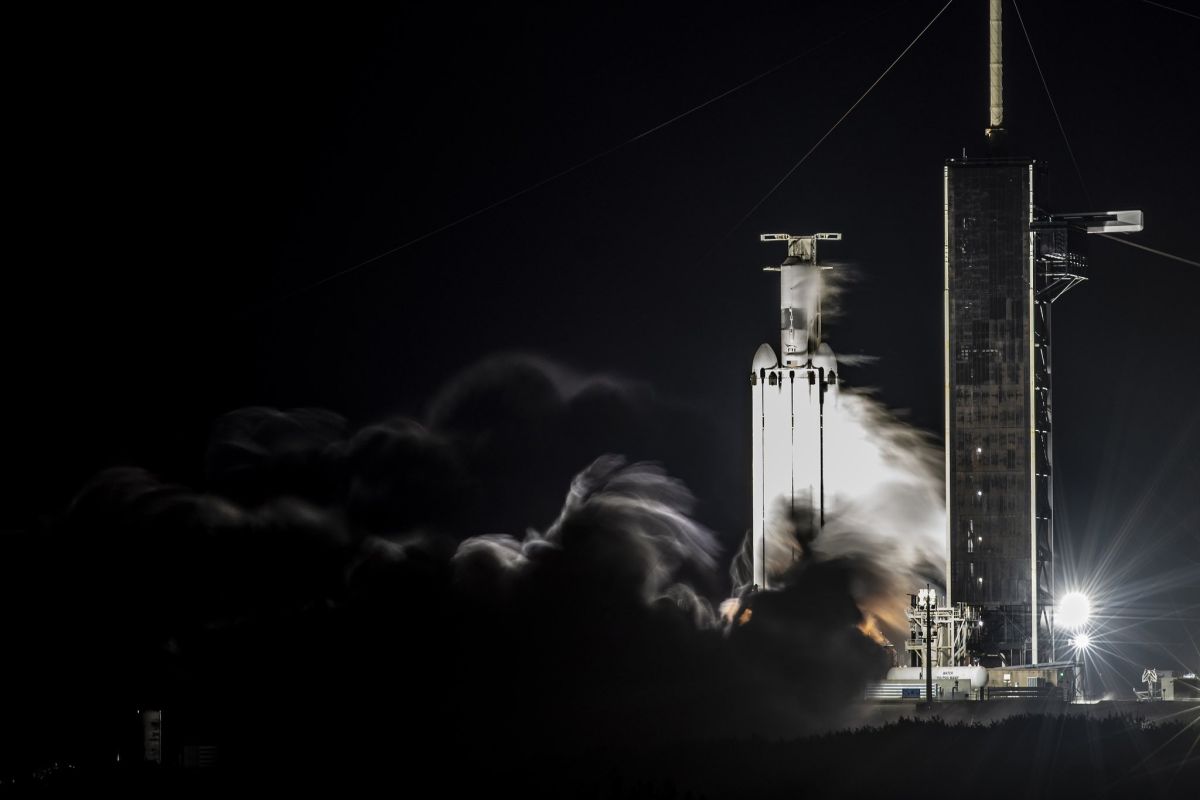SpaceX’s 26th commercial resupply mission (CRS) is scheduled to launch to the International Space Station from NASA’s Kennedy Space Center in Florida on Nov. 18.
Read MoreMonth: October 2022
Halloween on the International Space Station
Although no trick-or-treaters come knocking at the International Space Station’s front hatch, crew members aboard the orbiting facility still like to get in the Halloween spirit. Whether individually or as an entire crew, they will dress up in sometimes spooky, sometimes scary, but always creative costumes.
Read MoreGrinning Gourd Decorates Milky Way
While observing the outer region of the Milky Way galaxy, our Spitzer Telescope captured this infrared image of a cloud of gas and dust that looks like the hollowed-out pumpkins we see every Halloween.
Read MoreNASA Invites Public to Share in Northrop Grumman’s 18th Cargo Resupply Mission
NASA Invites Public to Share in Northrop Grumman’s 18th Cargo Resupply Mission
Read MoreAsteroids threatening Earth could be spotted by network of spacecraft near Venus’ orbit, Chinese scientists say
We may have a new way to spot potentially hazardous asteroids. Researchers have proposed a novel system of six surveyor spacecraft deployed in Venus-like orbits to serve as an early warning system for space rocks that threaten Earth. There are more than 2,000 potentially hazardous near-Earth asteroids in the Minor Planet Center database. According to NASA’s Center for Near Earth Object Studies, asteroids that are larger than about 500 feet (140 meters) in diameter and that come within about 4.65 million miles (7.48 million kilometers) of Earth are considered potentially…
Read MoreHalloween night sky 2022: See Jupiter, Mars and maybe some spooky fireballs
Based on the latest national forecast, skies will be mainly clear on Monday evening across about half of the contiguous (48) United States, as costumed kids arrive at the door looking for candy or some other Halloween treat. A storm system moving north-northeast from the Carolinas will, unfortunately, spread widespread clouds and precipitation across much of the Northeast and Middle Atlantic States, as well as part of the Ohio Valley and eastern Great Lakes. Meanwhile, a frontal system over the Pacific Northwest is also likely to spread clouds and precipitation…
Read MoreWatch SpaceX’s Falcon Heavy launch for 1st time since 2019 on Tuesday
SpaceX’s triple-booster heavy lift vehicle is poised to take off for its fourth-ever launch on Tuesday (Nov. 1). The mission, called USSF-44, was contracted by the U.S. Space Force and will launch two classified satellites into geostationary orbit atop a SpaceX Falcon Heavy rocket. Liftoff is expected on Tuesday from Launch Complex 39A at NASA’s Kennedy Space Center in Florida at 9:40 a.m. EDT (1340 GMT). You can watch it live here at Space.com, courtesy of SpaceX, or directly via the company. USSF-44 will be the first Falcon Heavy launch…
Read MoreOn This Day In Space: Oct. 30, 1964: 1st Flight of the Lunar Landing Research Vehicle
On October 30, 1964, NASA’s Lunar Landing Research Vehicle, or LLRV, took to the skies for the first time. The LLRV was a bizarre, four-legged flying contraption commonly known as the “Flying Bedstead.” NASA used it to simulate moon landings and liftoffs on Earth to prepare for Apollo 11, the first crewed lunar landing. Building Apollo: Photos from Moonshot History The first Lunar Landing Research Vehicle is pictured during a test flight at NASA’s Dryden Flight Research Center in California. (Image credit: NASA) Related Stories The first person to give…
Read MoreA skyscraper-sized ‘potentially hazardous’ asteroid will zip through Earth’s orbit on Halloween
A newly discovered, “potentially hazardous” asteroid almost the size of the world’s tallest skyscraper is set to tumble past Earth just in time for Halloween, according to NASA. The asteroid, called 2022 RM4, has an estimated diameter of between 1,083 and 2,428 feet (330 and 740 meters) — just under the height of Dubai’s 2,716-foot-tall (828 m) Burj Khalifa, the tallest building in the world. It will zoom past our planet at around 52,500 mph (84,500 km/h), or roughly 68 times the speed of sound, according to NASA (opens in…
Read MoreBest Minecraft space mods and builds: explore the cosmos, one block at a time
These Minecraft space mods and builds will help you build the universe right on your gaming console or PC. Minecraft allows you to build up mountains, rivers, buildings and other elements of living on Earth, and with a few special mods you can even explore the universe. Fans of Star Trek, galaxies and planets will all find a home with these space mods, which allow you to make changes to the base Minecraft environment to change it for science fiction or space exploration needs. Minecraft is the perfect way for…
Read More


